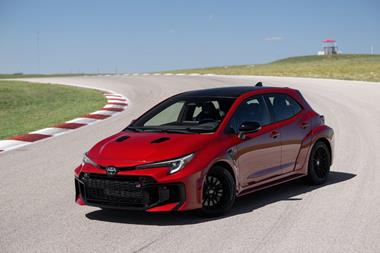
In recent days, Carlos Ghosn has been ousted as chairman of both Nissan and Mitsubishi and questioned by authorities in Japan on allegations of serious financial misconduct. Ghosn is the architect of the Renault-Nissan-Mitsubishi Alliance (he remains CEO and chairman of Renault), a longstanding partnership which is being severely tested by the scandal, acrimony and lurid accusations of corporate excess.
The ties that bind the three OEMS, however, are very strong – not least, from a manufacturing point of view. AMS takes a look back on some of the recent production plans made across the Alliance under Ghosn’s stewardship.
Big is better
The current high demand for SUVs and pick-ups has had a notable impact on plans within the Alliance, particularly from a manufacturing standpoint. Several recent announcements point to increasing production of larger models and a swerve away from smaller compact cars, especially by Nissan.
The OEM started production of the X-Trail at its plant in St. Petersburg, Russia on 30 October 2018, after recording a rise in sales across the country from 9,049 units in August to 10,134 units in September. The plant is also home to production of the Qashqai and the Murano.
The Nissan Navara pick-up started rolling off production lines at the Renault plant in Cordoba, Argentina back in July 2018. The model is also known as the Frontier, and is produced at other facilities in Spain, China, Mexico and Thailand.
Following strong demand for its Xpander in the ASEAN region, Mitsubishi said it would boost output of the SUV at its Bekasi plant by 20% to 120,000 units. It also started making its 4B4 and 4J1 engines at a new plant in Changsha, China, for use in the Eclipse Cross SUV and Outlander SUV.
Commercial vehicles
On 9 November, the Alliance revealed new plans for commercial vehicle production at two of its plants in northern France. It stated that €450m (US$393m) would be spent to make the next-generation Renault Kangoo family and the new Nissan NV250 at a plant in Maubeuge, while a new Mitsubishi vehicle would be made at another plant three hours east in Sandouville. The later is to be based on the Renault Trafic - a light commercial vehicle that was launched back in 1981 and initially built at Renault’s Batilly plant.
Renault also revealed its intensions to grow in the light commercial vehicle space in China. Along with its local partner Brilliance Automotive, the OEM recently signed a strategic agreement with Chinese officials from Liaoning province, which is situated in the northeastern part of the country. From here, the companies will produce three new electrified light commercial vehicles.
The plant in Shenyang currently makes models in three different segments: MPVs, medium-duty vans and heavy-duty vans. The companies hope that the addition of the electric LCVs will help them increase market share, stating that urban last-mile delivery is “expected to grow by 125% till 2030.”
Electric expansion
As well as making the three LCVs in China, the Alliance has also been tapping into the country’s electrified passenger vehicle market - the largest in the world. Dongfeng Nissan recently started production of the Sylphy EV at its plant in Guangzhou, while GAC Mitsubishi has started building the Eupheme EV at its plant in Changsha.
By 2019, Mitsubishi Motors hopes to have doubled sales in China compared with 2016 levels. One of the ways it plans to do so is by expanding its vehicle lineup of four-wheel drive and electrified SUVs.
Renault is also looking to make more electrified vehicles in Europe, with the focus firmly on production in France. It announced plans to make cars based on a new EV platform at its Douai plant, double the output of the Zoe at its Flins plant, and triple electric motor production at its Cleon plant. Ghosn described the moves as key to the “competitiveness and attractiveness of our French industrial sites”.




































